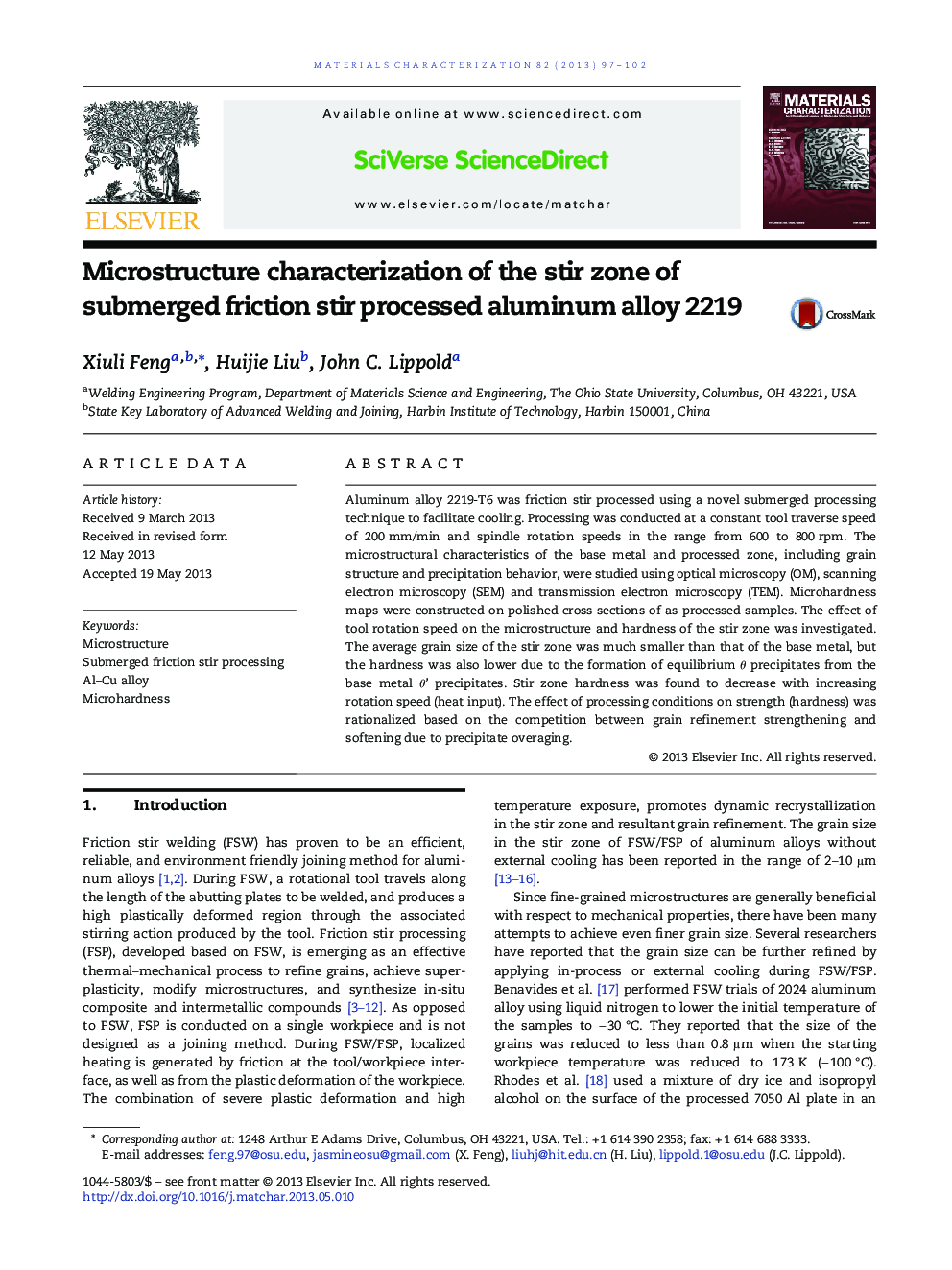| Article ID | Journal | Published Year | Pages | File Type |
|---|---|---|---|---|
| 7971323 | Materials Characterization | 2013 | 6 Pages |
Abstract
Aluminum alloy 2219-T6 was friction stir processed using a novel submerged processing technique to facilitate cooling. Processing was conducted at a constant tool traverse speed of 200 mm/min and spindle rotation speeds in the range from 600 to 800 rpm. The microstructural characteristics of the base metal and processed zone, including grain structure and precipitation behavior, were studied using optical microscopy (OM), scanning electron microscopy (SEM) and transmission electron microscopy (TEM). Microhardness maps were constructed on polished cross sections of as-processed samples. The effect of tool rotation speed on the microstructure and hardness of the stir zone was investigated. The average grain size of the stir zone was much smaller than that of the base metal, but the hardness was also lower due to the formation of equilibrium θ precipitates from the base metal θⲠprecipitates. Stir zone hardness was found to decrease with increasing rotation speed (heat input). The effect of processing conditions on strength (hardness) was rationalized based on the competition between grain refinement strengthening and softening due to precipitate overaging.
Related Topics
Physical Sciences and Engineering
Materials Science
Materials Science (General)
Authors
Xiuli Feng, Huijie Liu, John C. Lippold,
